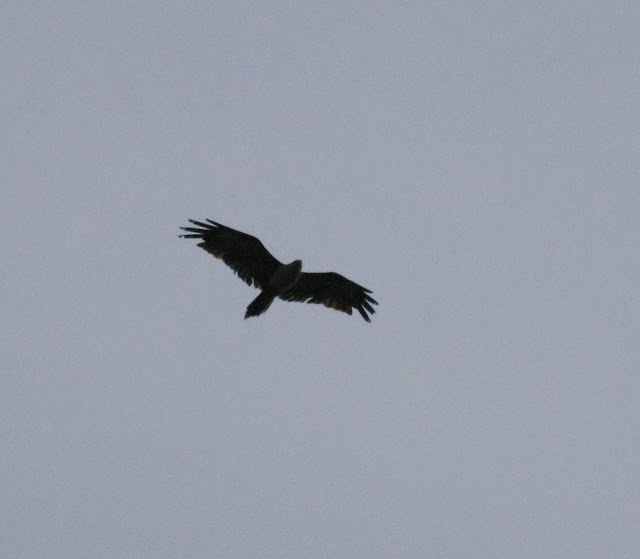Like most hobbies, bird watching can also be very addictive. You will need to learn how to phase yourself. Too much of it will get you burned out while too little or infrequent trips might probably make you lost touch of its latest development and eventually your interest as well. When you are in the forest, you will at times felt like you are connected to nature. You will have this feeling when nature behave like what they are supposed to be in your presence. Have a look at this Emerald Dove (Chalcophaps indica) below.
At first it flew into a bare patch of ground in between some low bushes. It then moved around to look for some "tit-bits" to eat from the ground. Having done with its meal it stop and started to casually preened itself right in front of us.
There were no staging here, no meal worms given nor any extras were called in. This was nature at its natural best behavior. It did not bother the bird at all even when we moved around to photograph it. That was what the meaning of "feeling connected" is all about.
There is probably some similarity between a bird and a cyclist - both of them seem to enjoy been photographed. Thank you bro ! Netizens should applaud you for being such a sport.
 |
| Silver-Rumped Spinetail (Rphahidura leucopygialis) |
You can clearly see its whitish rump despite the poor light in the early hours of morning.
 |
| Sooty Barbet (Calorhamphus fuliginosis) |
 |
| Blue-Eared Kingfisher (Alcedo meninting) |
After so many times and years of zipping passed me, i am so delighted to get its photo albeit a shaky one ! It perched on a branch quite close to a stream under a dense foliage. The reddish color at the base of its bill should indicate that of a female Blue-Eared. This (i believe) is one of the top five (5) most sort after "kings" by bird photographers after the Blue-Banded Kingfisher, Ruddy Kingfisher, Oriental Dwarf Kingfisher and Banded Kingfisher in this region.
 |
| Ruby-Cheeked Sunbird (Anthreptes simplex) - female |
Again after so many years of blur photos, i have finally able to get a somewhat 'decent' photo of a Horsfield's Babbler.
 |
| Malacocincla sepiarium |
This babbler was initially traced from its calls which was surprising a one note call instead of its usual 3 notes. Its one note call sounded like a "ferruginous babbler" (Trichastoma bicolor) calls - personal obsr. After awhile it went silent but luckily for me it moved up from the dense foliage.
Abbott's Babbler Horsfield's Babbler
Some differences which can be observed from the above photos are as follows:
i) Horsfield's Babbler's bill is hooked at its tip.
ii) Abbott's Babbler's legs look paler.
iii) Horsfield's Babbler's tail looks slightly shorter.
iv) Abbott's Babbler's throat is more whitish than Horsfield's.
v) Abbott's Babbler has a more prominent supercilium.
HAPPY BIRDING !























